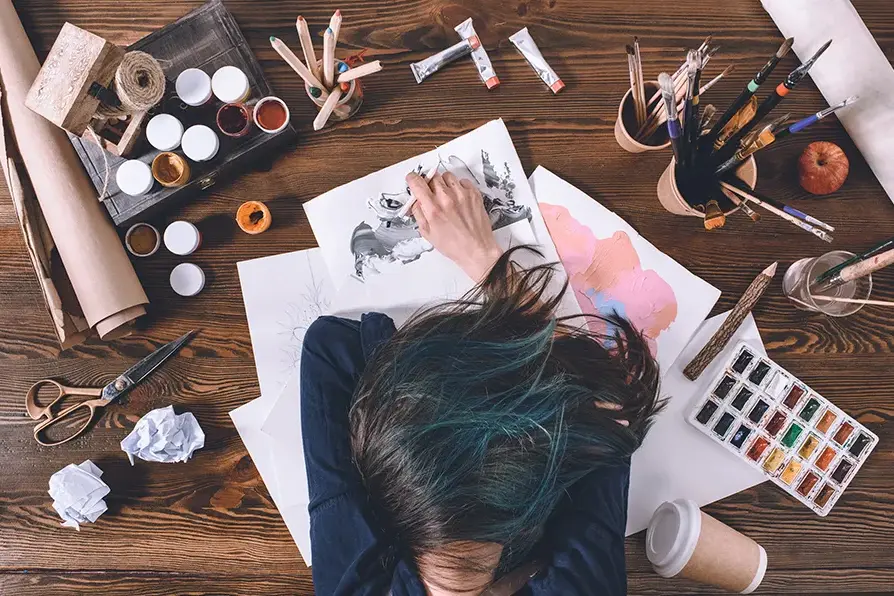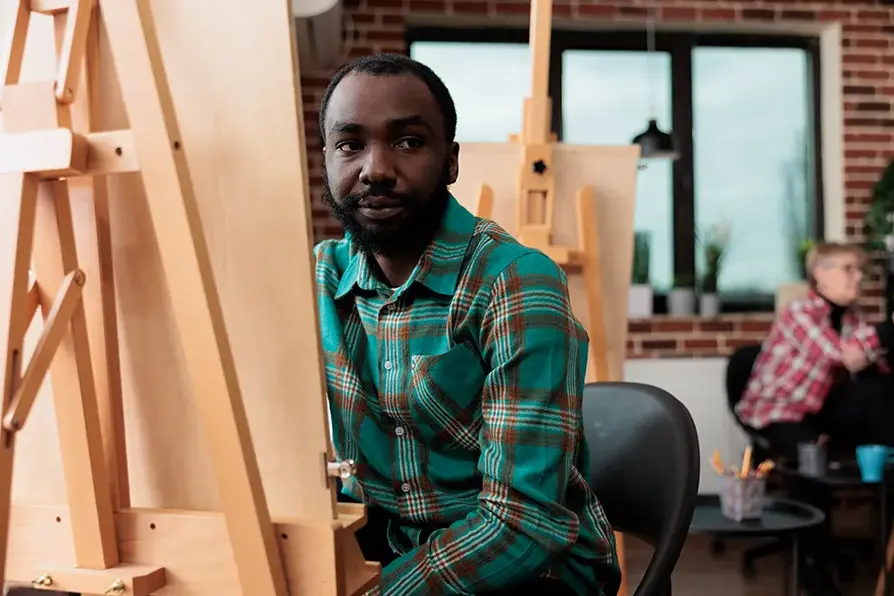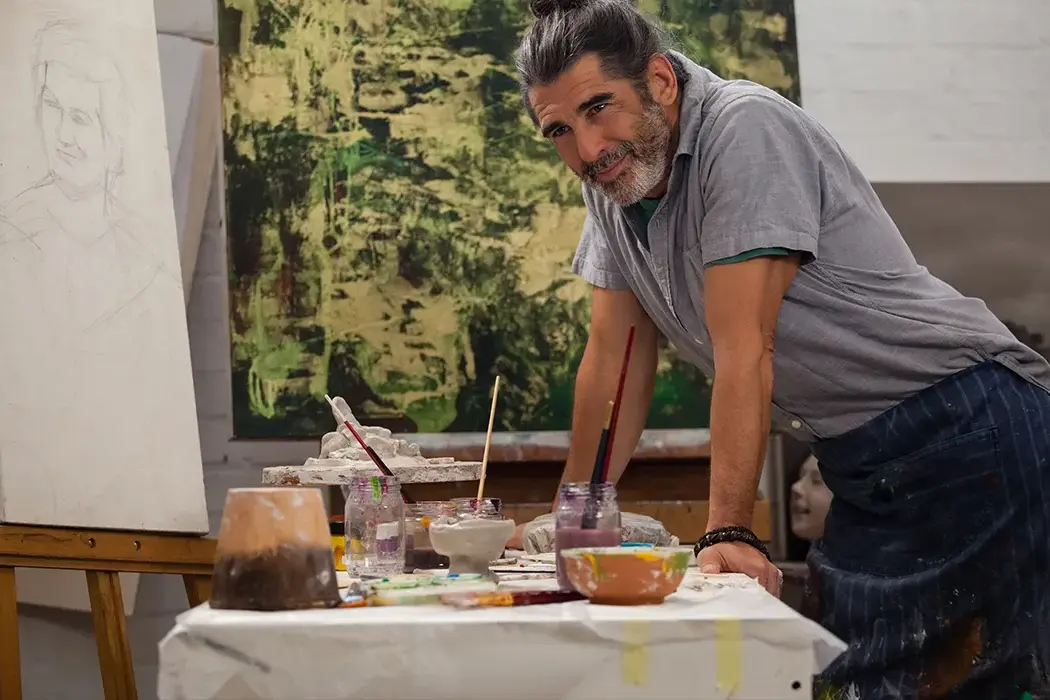7 Ways to Develop Your Art Style as a Unique Artist
Finding your artistic identity isn’t a fairy tale with a neat ending — it’s a grubby, frustrating wrestle with yourself, your tools, and a blank canvas that stares back like it’s judging you. This article lays out ways to develop your art style through practical exercises that don’t mess around. Emerging artists lost in the crowd? Mid-career types bored with your own lines? These exercises — seven to start, five to polish — will shove you toward a voice that’s yours, not some gallery’s wet dream.
Table of Contents
- Why Developing Your Art Style Matters
- 7 Practical Ways to Develop Your Art Style
- More Exercises to Refine Your Artistic Style
- How to Stay Consistent in Your Creative Growth
- FAQs About Finding Your Artistic Voice
Why Developing Your Art Style Matters
The art world’s a meat grinder — galleries want fresh meat, collectors want bragging rights, and Instagram wants eyeballs. A unique art style isn’t just a cute quirk; it’s your fist through the wall. Look at Basquiat — those jagged lines and scrawled words didn’t just happen; they screamed him. It’s not optional; it’s how you get seen, sold, or at least not forgotten.
But it’s bigger than that. A style isn’t just for them — it’s for you. It’s the difference between feeling like a hack and knowing you’ve got something real. Picasso didn’t switch from blue to cubes because he was bored; he was chasing what felt true. These ways to develop your art style aren’t about pleasing the suits — they’re about finding your gut.
Expert Tip: Stare at your favorite piece you’ve made. What’s the one thing you’d fight to keep? That’s your style’s seed.

7 Practical Ways to Develop Your Art Style
Here are seven hands-on ways to develop your art style that don’t require a PhD or any art degree (yes, you can do just fine without it). They’re not theory — they’re doing. Artists have been clawing their way to something real with tricks like these forever. Let’s break them down, deep and dirty.
Exercise 1: Study Your Influences
You’ve got heroes — Kahlo’s bloody heart, Hockney’s splashy pools. Don’t just gawk — rip them open. What’s the hook? Her pain? His light? Study how Kahlo leans into reds and thorns. Take that spark, twist it your way — maybe it’s grit or glow in your hands. It’s not theft; it’s fuel. Dig into how to learn from other artists for more on this. Here’s the trick: pick three things they do — say, bold outlines, muted tones, weird angles — and mess with them in your next piece. You’re not cloning; you’re cooking. Kahlo’s thorns might turn into your rusted nails. That’s where your style starts breathing.
If you’re deadly glued to oil paint, you’re in a cage. Grab charcoal, collage, or a stick and some mud — anything. Rauschenberg didn’t get famous with just a brush; he threw tires and taxidermy into the mix. New tools wake up your hands. Maybe you’re a sculptor stuck in watercolor land. Try this: spend a week with something alien — spray paint on cardboard, thread on wood. Screw perfection, you’ll work on that later (but still try not to dig too deep into it); see what sticks. Your style might hide in the mess you’ve been avoiding.
Exercise 3: Limit Your Palette
Limiting your palette can transform the way you see and mix colors, opening up unexpected creative possibilities. Three colors, no more. O’Keeffe’s flowers popped because she didn’t drown them in every hue under the sun — her early stuff was tight, focused. Limits aren’t punishment; they’re a spotlight. You’ll see what you lean on — soft edges, stark contrasts — and that’s your voice talking. Pick your trio — say, black, ochre, blue — and make five pieces. By the third, you’ll hate it. By the fifth, you’ll see something yours. It’s brutal, but it works.
A famous example here is Anders Zorn, a Swedish painter known for using just four colors (a famous Zorn Palette) — Yellow Ochre, Cadmium Red, Ivory Black, and Titanium White. Despite this simplicity, Zorn captured lifelike portraits full of depth and vibrancy. His approach forces artists to become inventive, deeply understand color relationships, and achieve harmony within constraints.
Exercise 4: Create Daily Sketches
Five minutes, any pen, any scrap — go. Turner’s sketchbooks are a mess of quick rivers and skies, and they built his misty genius. Do it daily, and your hand spills its secrets — curves, slashes, whatever you can’t stop doing. Set a timer. No erasing. After 30 days, flip through — spot the repeats.
Exercise 5: Seek Feedback from Peers
Show your work to someone who won’t lie — another artist, not your mom. They’ll see what you can’t: “Your greens are wild” or “Those corners are sharp as hell.” Van Gogh in his letters leaned on pals to sharpen his game. Feedback’s not fluff; it’s a mirror. Ask specific stuff: “What stands out? What’s weird?” Write it down. Test it in your next piece. They’re not the boss — you are — but they’ll point at your shadow.
Exercise 6: Reflect on Your Story
Your life’s not just noise — it’s material. Grew up in a loud house? Love empty fields? Kahlo painted her spine because it was her fight. Dig into what’s yours — anger, joy, quiet, roots — and let it appear. No one else has your baggage, background, ideas, upbringing; that’s your edge. Sit with it: What haunts you? What calms you? Sketch it fast — ten minutes, no overthinking. Your style’s in that gut punch, not some pretty filter.
Exercise 7: Curate a Signature Series
Pick one thing — grief, birds, broken glass — and make five pieces. Warhol’s soup cans (MoMA’s got them) weren’t random; they hammered his look home. A series forces you to commit, and your style shows up when you’re cornered. Plan it: one theme, one vibe, five swings. By the end, you’ll see what’s you — maybe it’s the way you smear paint or dodge straight lines.

More Exercises to Refine Your Artistic Style
Nailed the first seven? Good. These extra ways to develop your art style — they’re about staring at yourself, not the world, and sanding down the rough spots.
Keep a Creative Journal: Notebook, pen, no rules. Write what you love — gritty textures, loud reds — what feels right, what you hate. After a month, you’ll see threads: “I keep doing faces. Huh.” It’s not therapy; it’s a map to your style’s bones.
Create a ‘Style Board’ of Your Own Work: Print ten pieces, pin ‘em up. No one else — just you. What’s the glue? Dark vibes? Jagged cuts? The Getty’s restorers do this to crack an artist’s code; it’ll work for you too.
Try a ‘10-Piece Challenge’: One medium, one idea — ten tries. Your thing will get sharper every time, your quirks can’t hide in a marathon.
Make Art Without Thinking About Style: Forget “style” — slap paint, rip paper, go dumb. Pollock’s drips (MoMA’s take) came when he quit planning. Chaos can unlock what’s real.
Ask Yourself These 3 Questions: and answer hard. That’s your style’s spine (dig into struggles with developing art style for more on this fight).
- What keeps popping up — streets, eyes, rot?
- What tools fit—pens, knives, dirt?
- What makes you itch to create, not just stare?
How to Stay Consistent in Your Creative Growth
Style’s not a fling — it’s a marriage, and you’ve got to show up. These ways to develop your art style only stick if you do, and that’s where the grind lives. Consistency isn’t sexy; it’s a slow burn that turns scribbles into a career. Here’s how to keep the fire lit without losing your mind.
First, nail a routine. Five minutes daily beats three hours once a month — Turner’s sketchbooks prove it; he didn’t wait for inspiration, he chased it. Set a clock, pick a corner, and go. Miss a day? Fine. Miss a week? You’re toast. It’s not about perfection; it’s about showing up until your style’s second nature.
Next, track it. Grab a notebook or your phone and mark what you did: “Sketched hands, hated it.” “Tried ink, felt good.” After a month, you’ve got a trail — see what’s growing, what’s dead. It’s not busywork; it’s proof you’re moving. Van Gogh’s letters to Theo were his log; they kept him sane and sharp.
Failure’s your pal here. Botch a canvas? Good, figure out why. Picasso’s cubism didn’t drop from the sky, he trashed plenty to get there. Every flop’s a clue — too stiff? Too safe? Tweak it next time. The trick is not avoiding screw-ups but eating them for breakfast.
The community’s a lifeline too. Find three artists — online, local, whatever — and swap work. Not for hugs, but for grit: It stings, but it sticks. Hockney leaned on mates; you should too.
Goals keep you honest. Not vague crap like “get better”, but specific: “Ten sketches this week.” “One series by March.” Write it, chase it, check it off. Small wins stack up; suddenly, your style’s not a ghost — it’s a thing. Read finding your unique art style for more on this slog.
How to Stay Consistent in Your Creative Growth
Style’s not a fling—it’s a marriage, and you’ve got to show up. These ways to develop your art style only stick if you do, and that’s where the grind lives. Consistency isn’t sexy; it’s a slow burn that turns scribbles into a career. Here’s how to keep the fire lit without losing your mind.
First, nail a routine. Five minutes daily beats three hours once a month—Turner’s sketchbooks prove it; he didn’t wait for inspiration, he chased it. Set a clock, pick a corner, and go. Miss a day? Fine. Miss a week? You’re toast. It’s not about perfection; it’s about showing up until your style’s second nature. Next, track it. Grab a $2 notebook or your phone—mark what you did: “Sketched hands, hated it.” “Tried ink, felt good.” After a month, you’ve got a trail—see what’s growing, what’s dead. It’s not busywork; it’s proof you’re moving. Van Gogh’s letters to Theo were his log; they kept him sane and sharp. Failure’s your pal here. Botch a canvas? Good—figure out why. Picasso’s cubism didn’t drop from the sky; he trashed plenty to get there. Every flop’s a clue—too stiff? Too safe? Tweak it next time. The trick’s not avoiding screw-ups but eating them for breakfast. Community’s a lifeline too. Find three artists—online, local, whatever—and swap work. Not for hugs—for grit. They’ll call your bluff: “Your blues are killer, but your lines are lazy.” It stings, but it sticks. Hockney leaned on mates; you should too. Burnout’s real—connection kills it. Goals keep you honest. Not vague crap like “get better”—specific: “Ten sketches this week.” “One series by March.” Write it, chase it, check it off. Small wins stack up; suddenly, your style’s not a ghost—it’s a thing. Read finding your unique art style for more on this slog.
| Habit | Why It Works | Time Commitment | Pro Tip |
|---|---|---|---|
| Daily Sketching | Locks in your hand’s habits | 5-10 mins | Keep a pen in your pocket |
| Weekly Check-In | Spots what’s clicking | 15 mins | Be brutal—cut the weak |
| Monthly Goal | Gives you a finish line | 30 mins | Start small, then scale |
| Peer Swap | Keeps your ego in check | 1 hour | Pick folks who don’t suck up |

FAQ
Q1: How long does it take to develop my art style?
A1: No clock on this. Some find it fast — months. Others? Years. These ways to develop your art style push it along — daily sketches can hint at it quick if you don’t slack.
Q2: Can I change my art style after defining it?
A2: Damn right. Hockney went from pools to pixels — same artist, new skin. These exercises let you shift or burn it down. Check Unique art style: is it essential? for the full take.
Q3: What if I feel stuck creatively?
A3: ‘10-Piece Challenge’ or ditch the rules and go feral. Limits or freedom — both can kick you loose. Pick one, run with it, see what breaks.
Conclusion
These ways to develop your art style aren’t a shortcut (nothing is a shortcut) — they’re a toolbox. Seven to build, five to refine, and a plan to stick it out. Study artists, limit your colors, journal your guts — whatever clicks, do it. The art world doesn’t wait; it chews up the quiet. Start today. Your style’s in there, clawing to get out.
More tips? Hit our other posts or join the crew.


